
Learning to Learn – The Shri Induction Program
Learning to Learn – The Shri Induction Program
Learning to Learn – The
Shri Induction Program
What is the basis of an informed decision?
When in Grade 10, all the students of our great nation continue to travel on a journey they began at a very young age. They are placed in the position of choosing the course or field of study for the next 4-10 years (at the very least) of their lives. It is a decision that will allow them to work through some of the requisite skills and the ideas that they wish to propagate and permeate among their peers and others.
To make this informed decision, the learners need to collect data, process this information based on their needs and wants and the needs and wants of their family, including other factors that are inherently tied to the beginning of one’s career when the time arrives.
I have shared an example of an important crossroads for someone who is a part of an educational institution in this country, but now, let us try this shoe on another foot. If one is a part of the corporate workforce, the skills needed to acquire and process the information on a daily basis and make an informed decision are embedded within the values and the mission of the company’s long-term goals. The freedom to explore alternate paths to solutions, or to develop new ideas is limited by timelines and vision each of us has set for ourselves.
There is a slight difference when it comes to the decision-making process in the world of education. Teachers and educators are often considered the progenitors, revolutionaries that herald the growth of a culture and the collective wisdom we have as a society. As such, they need to make consistently imaginative yet carefully considered decisions every single working day at school.
This is doubly true for IB educators. As we go exploring the intricacies of what an IB curriculum chooses to instil in our learners, do you think it might be important to learn about our international friends? As part of this global community of IB educators at The Shri Ram Academy, learning and teaching meld into two sides of the same coin. The effectiveness of each is dependent on the other.
Making the real-world connection is very important for the child’s learning, and real photos help them make connections with the real world. We as teachers worry so much about symbols and supporting students with visuals. But I feel we need to worry about how we are pushing them to generalize the skills they are learning. Mass media such as books, TV, and the internet are key sources of information, allowing the child to increase their knowledge by learning indirectly about things they’ve never directly experienced. Children today typically have a lot of experience with picture books, yet still, exhibit signs of confusion. Even infants, when they see a picture book or pictures, try to put them in their mouth and eat the books, try to grasp at photos of objects as if they were real, and read picture books upside down.
It looks like we are back where we began, so to rephrase slightly, what do teachers need to make informed decisions?
We need Skills
An informed decision places a heavy burden upon all of us. Imagine a well-rounded choice to be a castle we are unable to see. We are not in its presence, but all of us have an idea of what a castle might look like. As a part of everyday life, we often have to make the necessary choices. It is often hard to recognize the best idea when it presents itself as there are many voices that will offer suggestions, retorts, additives etc. So how does one reach the most informed choice?
The answer is simple yet overwhelmingly effective in the real world. Skills are the answer and not just the physical kind. Let us consider the plethora of skills required by educators who instruct in the International Baccalaureate (IB) program and how one can effectively use them while prioritising the values we bring as a part of the Shri Family of Schools. Finally, we will take a look at what the Shri Induction Program has done so far to further these goals.
Improving our educators’ abilities with the introduction of methodologies and competencies – which are necessary to inculcate – along with the ideals and skills that are a part of the IB Programme, emphasising the Shri Ethos and the values we endorse as a part of the Shri Family are some of the requirements that were built into the development of the induction program.
It is at the end of a phase of experimentation and gathering information from the experienced members of our staff that we discovered something important.
For the instruction, for Learning to “stick”, to help learners from different academic and cultural backgrounds and different learning approaches to realise that the knowledge they imbibe is not just invaluable, but essential during the hours of the school day and in life as well. Learning about the skills required to properly manage academics, writing, time management, and organisation skills are relevant and necessary to the fundamentals of teaching as a vocation.
The Era of IB
The IB program has several tenets that are presented at face value, but the truth is that the IB cake has several layers. Many of these layers are not very apparent at first glance, nor very fulfilling to the learner’s appetite in the short term, but could do wonders in the long term to the ability to learn, consistently.
From introducing iterative strategies to following the learning curve required for a learner and promoting self-awareness and responsible decision-making, the IB program is the first step in developing the skills a student needs for a transforming multicultural world whose rules and innovations are always ever-changing. This is also a program that caters to globalized education for children worldwide.
It has a lot of ideas and skills built into the curriculum. If you are intrigued, take a closer look at the mood board, and you may find skills that you were on the lookout for in your child’s educator.
The IB system has been around for quite some time now, but its roots are interesting, to say the least. In 1948 after the world had seen the end of one of the most tumultuous eras in human history, America reeling in the throes of an economic depression so gargantuan that it would be dubbed “The Great Depression”, at a time when the horrors and the eventual ennui of the war would still be fresh in the minds of the populace of the world, a French educator who was heading The International School of Geneva (the oldest international educational institution in the world), Marie-Thérèse Maurette
introduced the basis on which the IB program would grow, evolve and transform into what it is today.
In a paper titled “Educational Techniques for Peace. Do They Exist?”, a clear post-war sentiment alloyed with respect and openness to others and with a strong international orientation to allow for a diverse spectrum of experiences and culture transformed into one of the leading educational curricula among globalized learning spaces.

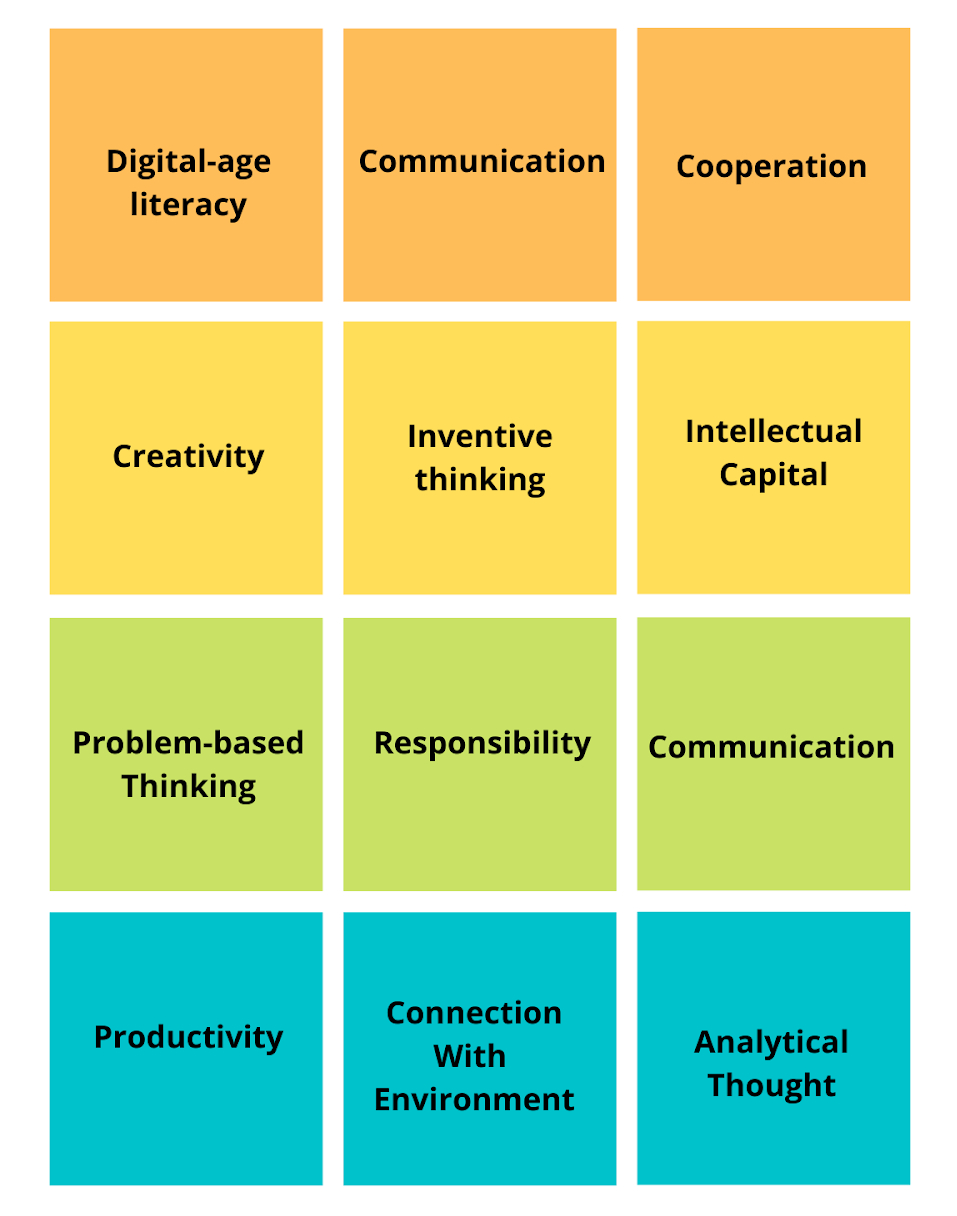

The Shri Induction Program
The Shri Induction Programme was born out of the need to answer the many questions we had, including the question “How do we instruct our instructors?” which makes the title of this post quite apparent, doesn’t it?
At The Shri Ram Academy, the importance placed on teachers and the needs they have in order to constantly evolve their teaching methods is par none.
It is the distillation of carefully vetted information that brings steady but sure learning. It is, and was, the foundation of creating an environment that is challenging yet collaborative. To create a space that builds trust and relationships.
The importance of learning the Shri Differentiators, and allowing the teachers to immerse themselves and capture the vision of the school was first among the priorities of the Shri Induction program. Our educators arrived with extensive knowledge of the subject matter, exemplary qualifications and the experience of having served in the educational systems across the nation and beyond. The Induction program was the perfect opportunity to introduce and infuse our educators with all the wonderful little details of the Shri Way.
One has to wonder how large a part nature and our environment play when we talk about the Shri Way.
Learning from Nature Itself
A large part of our teaching strategy as a member of the Shri Family has to do with our connection with nature. It is such a large portion of our teaching we have made it a large part of the school around us. Nature is a teacher that needs no training and helps the learning process in ways we cannot fully conceive of. Learning in/from nature offers degrees of freedom we do not get to experience frequently. It is also true that nature is a teacher like no other.
When you arrive at our campus, you will notice this teacher at our butterfly garden where butterflies can be found in abundance., in the different biomes of the Tree Court and the Octopus Garden with the forest grove and the sandbox are ways for children to explore.
It is deeply important to us that this “Teacher” is a part of every child’s spectrum of learning.
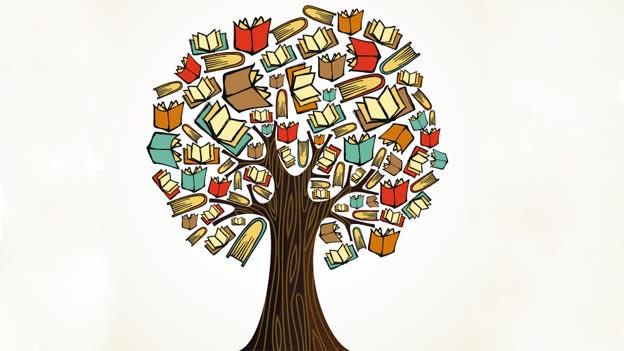
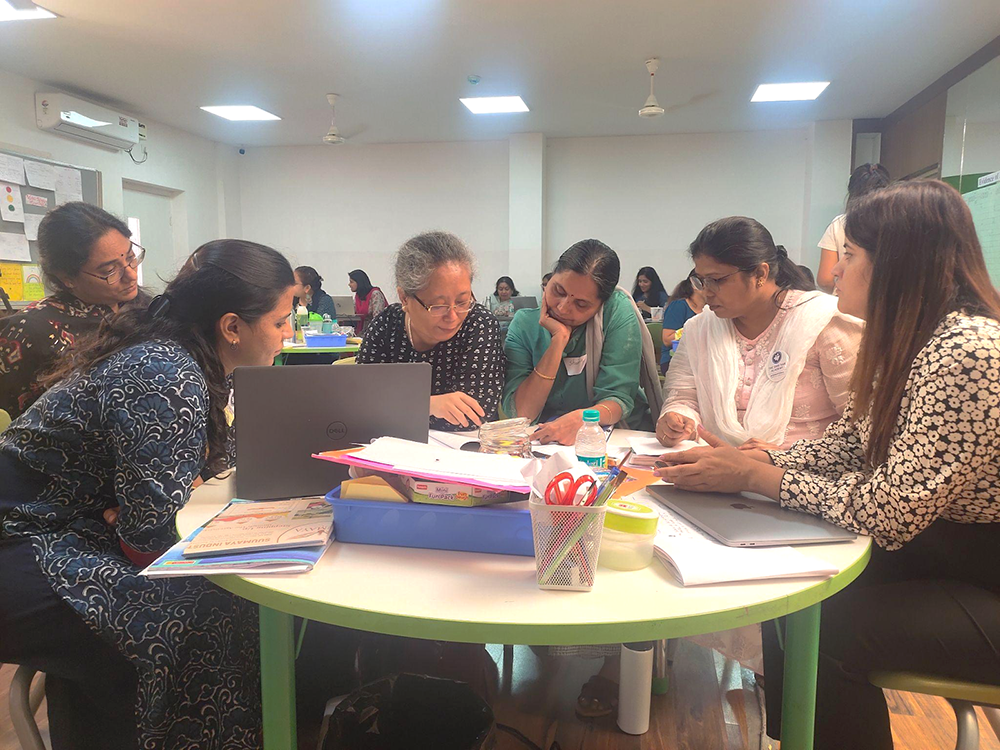
Some of the programme members
The Shri Induction program was the result of the hard work and commitment put on display by all members of our teams from both sides of the line i.e the teachers, instructors and our leadership team. We had the pleasure and honour of hosting sessions conducted by several members of the leadership team, including Ms Manika Sharma (Director – Shri Ram Schools, New Delhi), Ms Sindhura Indukuri (Founder Managing Director – Shri Ram Hyderabad Schools), Dr Jyoti Reddy Ghanta (Director of Education – Shri Ram Hyderabad Schools) and others who espoused the values and creativity of the Shri Way in their respective sessions.
The plethora of multisystem workshops and sessions at the SIP ranged all the way from learning teaching strategies to employing activities, and targeting skills required by learners.
The Shri Induction program ran for a total of 19 days, with 152 hours of documented sessions, undertaking a spectrum of topics and activities. Beginning with the Shri philosophy and our core values, Ms Manika Sharma (Director – The Shri Ram Schools, New Delhi) brought to the forefront the topics listed above, the Parent-School Partnership. Isn’t it great that the next section touches on this very topic?
For a complete description of the induction programme and the sessions undertaken, kindly take a closer look at our newsletter, “Ig”Nited.
Entering a New Era
As we enter this new partnership with parents, the ability and the willingness to communicate is the primary way that the TSRA family will use to become an institution that caters to trust and knowledge. Learning is a collaborative effort, a “team sport” as they say, because it takes a village to raise a child. All we are doing is making sure that all the villagers are content with their ability to teach.
The inherent emotionality that is a part of teaching and the need for teaching emotions is a core value we possess. Understanding our feelings and how we can channel them is a challenge we can only solve by working together.
It is with time and the spirit of being together that we will ensure that our learners receive not just the education they need, but the education they deserve. Learning that is in the present and evergreen.
It is a new era at The Shri ram Academy and an era of learning. It will be a slow process, and arduous one too, but I’d like to think that any vision that has brought together such a large family dedicated to learning is worth pursuing.
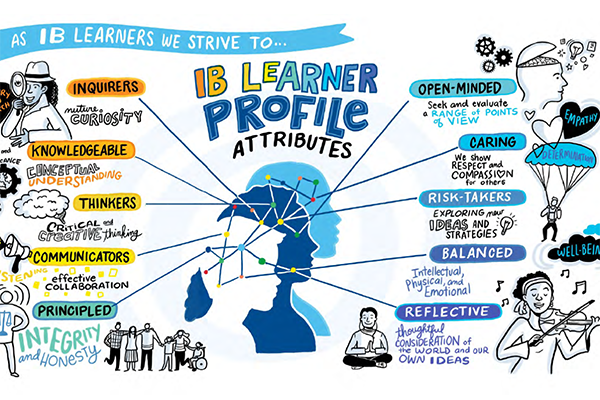
Let us leave you with…
The TSRA induction program began with a sense of delight and hope. Delight – because the Shri legacy in Hyderabad had done wonders, resulting in another wonderful extension. Hope – because our team has done wonders already, and we hope to create an institution that brings forth these progressive values for the benefit of our students.
Over the coming months, we will use this space to explore and dive deep into the ideas behind education and its participants. We will also be questioning ourselves in the hope of finding answers or simply wander through these ideas. Let us wander these cobblestone paths together, at least until the castle is in sight.
– N Siddharth Shankar
Manager – Creative Communications

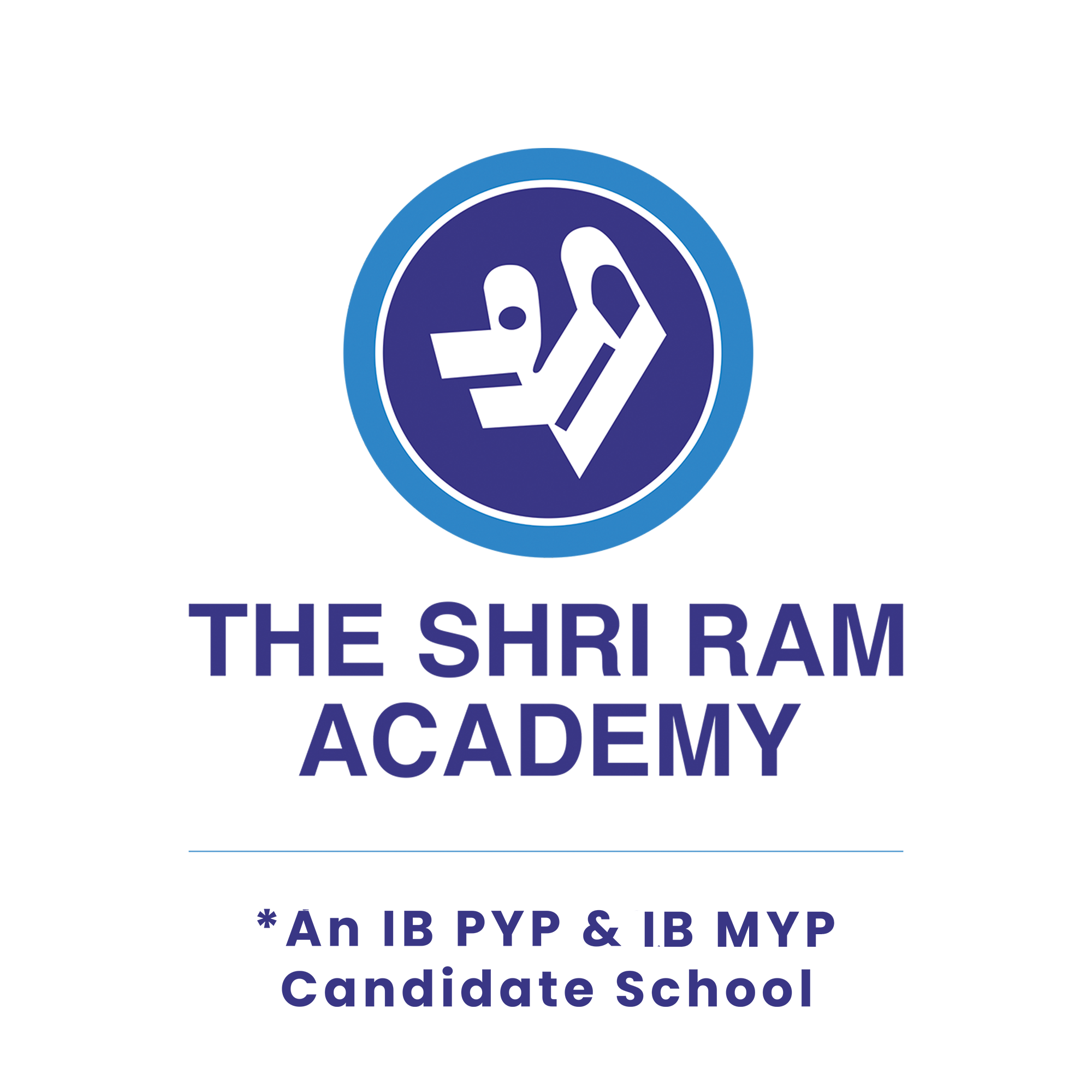

Leave a Reply